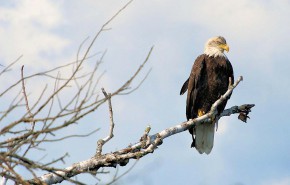A recent ruling by the U.S. Fish & Wildlife Service (FWS) has reclassified the northern long-eared bat as endangered under the Endangered Species Act (ESA), a move that expands the need for clients to contract wildlife environmental services designed to clear sites for project work. The new classification, which goes into effect on March 31, 2023, stands to affect environmental requirements for a range of projects for the energy industry, developers, municipalities, state DOTs, and others.
![]()
The FWS based its ruling on the ongoing spread of white-nose syndrome, a deadly fungal disease that is expected to affect 100% of the northern long-eared bat’s range by the end of the decade. “White-nose syndrome is decimating cave-dwelling bat species like the northern long-eared bat at unprecedented rates,” said FWS Director Martha Williams. “[FWS] is deeply committed to working with partners on a balanced approach that reduces the impacts of disease and protects the survivors to recover northern long-eared bat populations.” According to the FWS, white-nose syndrome has caused estimated declines of 97% to 100% in affected northern long-eared bat populations.
Environmental Manager Adam Mann and Assistant Environmental Manager Jason Duffey are among a GAI environmental team that helps clients’ projects proceed in a timely manner by addressing the protection of bats and other wildlife in connection with project work and by aiding clients in following governmental policies and guidelines during project activities. Bat-related services can include surveying for the presence/absence of listed species, performing detailed habitat studies, designing and installing artificial bat habitats, preparing permit applications and supporting documentation, and more.
“A large percentage of our bat environmental work over the last 20 years or so has centered on meeting regulations concerning the Indiana bat,” said Mann. “Part of what makes the new regulations so impactful to project work is the fact that the range of the northern long-eared bat is more widespread.” As Duffey explains, “The FWS reclassification will affect a wider geographic area, so it will also affect more projects. This will likely extend the need for our bat environmental services into new regions, and it may signal the first time that FWS bat regulations have affected many new and existing clients.” Proactive planning and prioritizing of early agency consultation for projects within the northern long-eared bat’s range are crucial to help keep clients’ projects moving on schedule and on budget, particularly if bat studies could be necessary.
Contact GAI environmental professionals Adam Mann, 859.692.4122, or Jason Duffey, 859.692.4152, for more information about GAI environmental services that support clients and their project needs while helping conserve wildlife resources. Message GAI online and start the conversation about how our multidiscipline professionals can meet your unique project needs.
![]() Adam Mann is a wildlife zoologist and project manager with a diverse background in mammalogy, herpetology, ornithology, and ichthyology. He has more than 20 years of professional experience working closely with bats, amphibians, reptiles, birds, mussels, and fish. Adam is a federally permitted bat biologist who has studied, documented, handled, and conducted numerous surveys for rare, threatened, or endangered bats of the eastern U.S. such as Indiana bats, northern long-eared bats, gray bats, Virginia big-eared bats, and tricolored bats.
Adam Mann is a wildlife zoologist and project manager with a diverse background in mammalogy, herpetology, ornithology, and ichthyology. He has more than 20 years of professional experience working closely with bats, amphibians, reptiles, birds, mussels, and fish. Adam is a federally permitted bat biologist who has studied, documented, handled, and conducted numerous surveys for rare, threatened, or endangered bats of the eastern U.S. such as Indiana bats, northern long-eared bats, gray bats, Virginia big-eared bats, and tricolored bats.
![]() Jason Duffey is a wildlife biologist with extensive experience performing environmental surveys throughout the eastern U.S., primarily pertaining to bat ecology and conservation. Jason is a federally permitted bat biologist who has coordinated and led a diverse array of field studies for bats for more than 20 years, including small- and large-scale mist netting and acoustic presence/absence surveys, radio telemetry studies, habitat assessments, and hibernacula censuses.
Jason Duffey is a wildlife biologist with extensive experience performing environmental surveys throughout the eastern U.S., primarily pertaining to bat ecology and conservation. Jason is a federally permitted bat biologist who has coordinated and led a diverse array of field studies for bats for more than 20 years, including small- and large-scale mist netting and acoustic presence/absence surveys, radio telemetry studies, habitat assessments, and hibernacula censuses.


